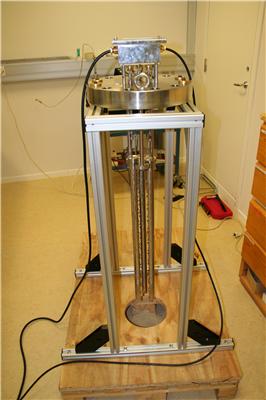Oct 29 2009
Scientists at SINTEF and StatoilHydro have developed a level-gauge staff that uses pressure differences to measure the levels of water, oil and gas in oil separators.

Some measurements are harder to make than others. Accurately gauging the water level in an oil separator is a difficult task, but because so much money is at stake it is essential to find good methods.
The problem with previous measurement techniques has been that sensors can become blocked, or that mud containing radioactive components spoils the measurements. For this reason, the StatoilHydro oil company, in collaboration with SINTEF, has developed a pressure-profile level measurement system.
The measuring device needs to be usable on all types of separation processes, both onshore and offshore. The new pressure-based measurement device has microsensors mounted all the way down the staff. A typical three-metre staff contains one hundred sensors, each of them 30 mm in length.
These next-generation pressure measurement devices are accurate, compact and inexpensive. They need to be capable of measuring the interfaces between the water/oil and oil/gas phases and the thickness of the water/oil emulsion. Kinks in the pressure profile indicate these phase boundaries. A comprehensive set of software routines underlies the measurement process.
SINTEF has produced two measurement staff gauges, and StatoilHydro is currently piloting them on the Oseberg Field Centre in the North Sea.